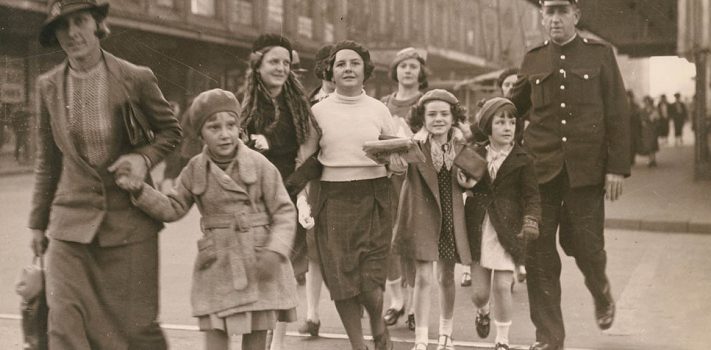How to Teach Situational Awareness to Children – Part 4
by T.Y., Survival Blog:

(Continued from Part 3.)
GAME 4: BUG OUT!
Summary
Teach the concept of evacuation and what is important to bring by simulating an event where their toys must leave home.
Concepts Taught
Strategic evacuation.
Materials required
You will need a favorite character toy, a bag, and some basic supplies for the toy to have such as clothes, food, water, blanket, etc. A doll with doll items would be perfect, but you can also use a superhero action figure with some play food, or even a stuffed dog with pretend dog food and bowls.
Before the Activity
Choose one of your child’s toys that will have to bug-out or evacuate their home. Have available some items that the toy will need to pack for their evacuation around the child’s room along with a bag.
How to Play
- Play a simple game with your child using the target toy and the items they need for day-to-day living. For example, if you are playing with a superhero figurine that is flying and jumping on the child’s bed, make part of the game be that he needs to stop for a drink of water or something to eat. Later in the game, play with the child that he is getting cold and needs to wrap up in a blanket. Play this way until the child is familiar with the toy’s daily needs and where to find the items necessary to fulfill the needs.
- Next, you will simulate a scenario where the toy needs to evacuate. Try to use a situation that could actually happen in your location. For example, if your area is prone to snow storms, use that. If not, you may say that a tornado is coming or there is a forest fire nearby. Tell the child that something is happening and the toy must bug-out or evacuate to a safe place.
Note: If these terms are new to your child, explain what “bug out” or “evacuation” means. Make it fun by smiling and saying, “Oh no! A snowstorm is coming! Let’s bug-out—quickly!”
- Hand the child the bag and tell them to pack it with things the toy may need.
- As necessary, give them guidance about what items belong in the bag. For example, say something such as, “Your dolly might get hungry, should we put some food in the bag?” Or, “What if your dolly gets cold in a snowstorm before she gets to her shelter. What could we pack for her?”
- With the bag packed, take the toy and the bag to an imaginary safe location, which could be another room in the house. Review the items that the child packed in the bag and see if anything might be missing. Relate it to their life by asking what they might put in a bag if they had to leave their house in an emergency.
- As the child matures and becomes more complacent with the game, look for safe opportunities to introduce more realistic elements, such as evacuating with the toy in actual bad weather to an outside building or playhouse. That way your child will get a more realistic appreciation of the importance of life-sustaining items and skills.
Assessment
If your children are new to the idea of evacuation, assess their reaction to the imaginary situation. Do they stay calm, yet concerned for their toys? Do they understand that the toys will have to leave their homes and that they can only survive with what they bring with them? Observe what items your children choose to put in the bag. Over time, they should pack a bag more quickly and with items that cover all the toy’s basic needs.
=============================================================
GAME 5: SCAVENGER HUNT
Summary
Go on a scavenger hunt outside to teach your children about the resources in your area.
Concepts Taught
Identifying natural survival resources.
Materials required
You will want to take pictures of items you want your children to find and print them out in a list type form. You will also want a marker, and to make it extra fun give your children a magnifying glass and binoculars!
Before the Activity
You can play this game many times with different items on the list. It is good to categorize the items each time you play it. For example, you can go on a scavenger hunt for wild edibles, and the next time you can hunt for fire starting materials. Other ideas include medicinal plants, water sources, shelter building materials, etc. Whatever items you wish to teach about on that particular scavenger hunt should be on a paper that you can bring with you. You will also need a marker for checking items off the list.



